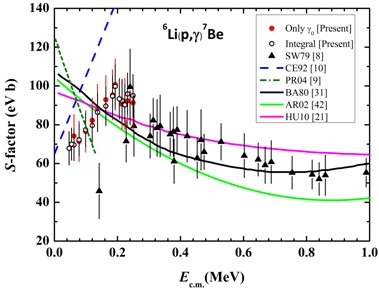Nuclear astrophysics strives for a comprehensive picture of the nuclear reactions responsible for synthesizing chemical elements and for powering the stellar evolution engine. Thereinto, the measurements of nuclear reaction cross sections (or expressed as S factors) at stellar Gamow energies are of great importance to nuclear astrophysics. Researchers in Nuclear astrophysics group at the Institute of Modern Physics, Chinese Academy of Sciences (IMP) had established an experimental setup at the 320 kV platform in recent years. Based on this setup, the low-energy astrophysical S factors of the 6Li(p,g)7Be reaction were directly investigated. The experimental S factor of this reaction showed an interesting sizable drop contrary to any existing theoretical expectations at energies below 200 keV. Such drop has not been fully understood yet and might reflect a novel reaction mechanism. In order to interpret such an interesting phenomenon observed, researchers proposed the appearance of a new positive-parity 1/2+ or 3/2+ resonance in 7Be at Ec.m.»190 keV. However, this hypothesis needs to be verified by further experiments. This study shows the danger of extrapolating experimental data over too large an energy range and demonstrates the need for careful direct experimental studies of reaction cross sections at or near stellar energies. In addition, the new results were simply discussed in the framework of a SUSY assisted Big-Bang Nucleosynthesis (BBN) model. Although they have verified that the final yields of 7Be and 6Li do not change significantly as expected with new data, the theoretical calculations of the BBN model would benefit from an improved determination of the cross section of 6Li(p,g)7Be. The result has been published in Phys. Lett. B725 (2013) 287. 
Fig.1 Astrophysical S factors of 6Li(p,g)7Be as function of energy. The solid circles represent the S factors determined by the yields only from the photo-peak of g0, and the hollow circles represent the ones by the yields from the integration method. (Image by IMP) |

